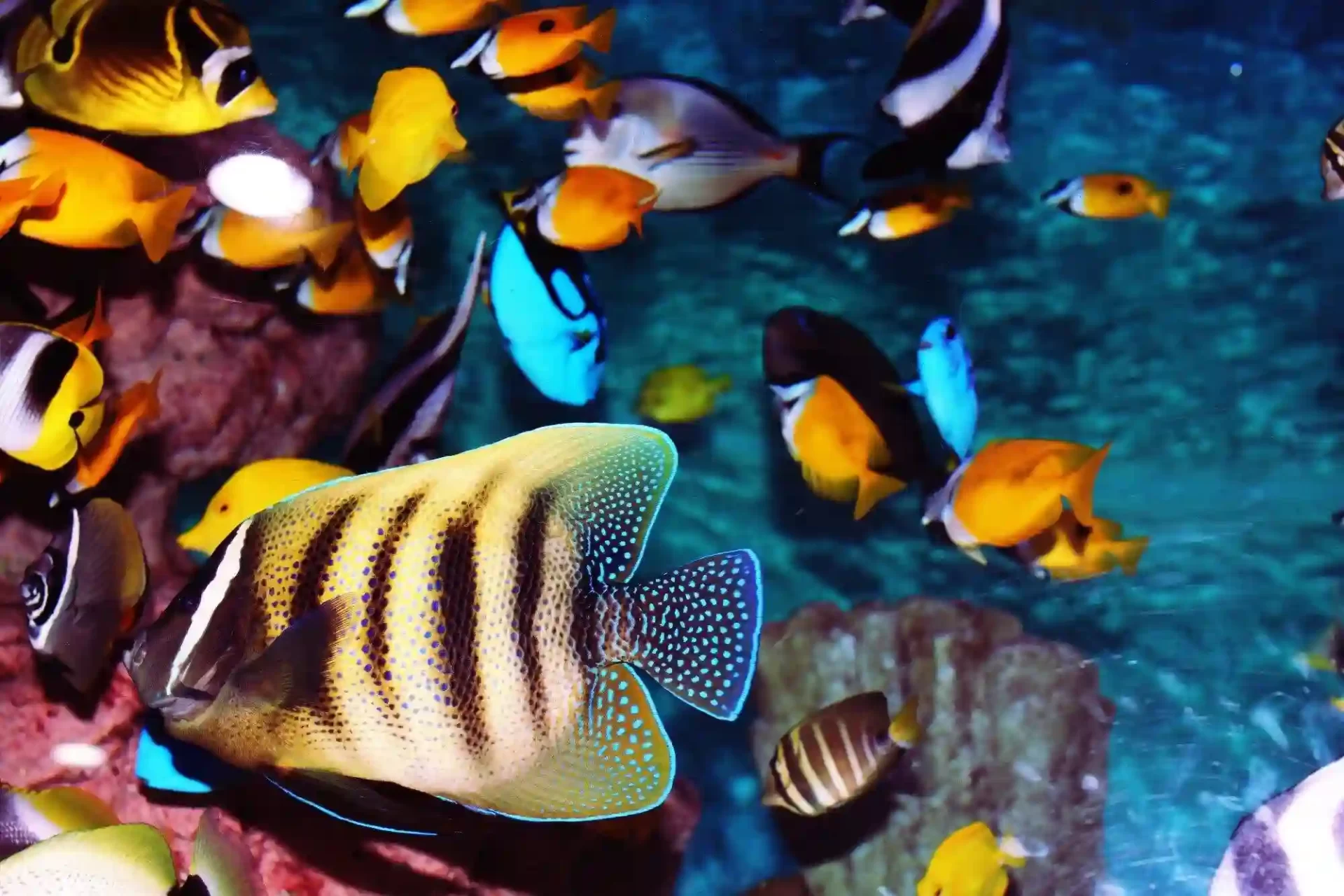Are you enchanted by the vibrant hues of purple saltwater fish and dreaming of creating an aquarium that mirrors the beauty of the ocean? Setting up an ideal habitat for these stunning creatures can be both rewarding and therapeutic.
In this guide, we will provide you with some essential tips and tricks to create the perfect aquarium for purple saltwater fish.
Choosing the Right Tank
When it comes to creating a suitable environment for purple saltwater fish, selecting the right tank is crucial. These delicate creatures require plenty of space to swim and thrive. Therefore, it’s recommended to opt for a tank that is at least 30 gallons in size.
Additionally, make sure the tank has good filtration and circulation systems. Purple tang fish produce more waste than freshwater fish, so keeping the water clean and oxygenated is essential for their health.
It’s also important to consider the material of the tank. Glass tanks are more durable and scratch-resistant compared to acrylic tanks, but they can be heavier and more expensive. On the other hand, acrylic tanks are lighter and less prone to cracking but may get scratched easily.
Creating the Ideal Environment
The fish are used to living in coral reefs. So, it’s important to recreate a similar environment in your aquarium.
This can be achieved by adding live rock, coral, and sand as substrate. These will not only provide hiding spots for the fish but also help maintain the water quality.
Maintaining proper water parameters is crucial for the well-being of your yellow salt water fish. The ideal temperature should range from 75-82 degrees Fahrenheit with a pH level between 8.1-8.4. Regular testing and monitoring of these levels are necessary to ensure a healthy environment for your fish.
Choosing Suitable Tankmates
When it comes to selecting tankmates for your purple saltwater fish, it’s important to choose species that are peaceful and have similar water requirements. Some suitable options include clownfish, damselfish, and gobies. Avoid aggressive or territorial fish as they can stress out your purple tangs.
The purple tang price may be higher than other species. It’s important to research and carefully choose compatible tankmates to avoid any potential conflicts and losses. This will also ensure a peaceful and harmonious aquarium environment.
Feeding Your Purple Saltwater Fish
Purple saltwater fish are herbivores and require a diet rich in algae and seaweed. Also, give them quality commercial foods for saltwater fish. But, be sure to also feed them live or frozen leafy green vegetables.
Feed your fish small amounts multiple times a day. Don’t give one large feeding. This prevents overeating and keeps the water clean.
Keep in mind that purple tangs are grazers, so make sure there is always enough food available for them to nibble on throughout the day. A Purple Tang diet is crucial to maintain the vibrant colors and health of these beautiful fish.
Monitoring and Maintenance
Proper monitoring and maintenance of your aquarium are essential to ensure the long-term health of your purple saltwater fish. Regular water changes are crucial to keep the environment stable and free from harmful toxins.
It’s recommended to change 10-20% of the water every two weeks. Be sure to use a high-quality marine salt mix and dechlorinated water to avoid introducing contaminants.
Cleaning the tank is another important aspect of maintenance. Algae can build up on the glass, rocks, and other decorations, obscuring the view and potentially harming your fish.
Use an algae scraper or magnetic cleaner to remove algae buildup regularly. Additionally, check and clean the filtration system to ensure it is functioning efficiently.
Observing your fish daily will help you detect any signs of illness or stress early on. Look for changes in behavior, color, or appetite, and take action immediately if something seems off. Quarantining new fish before adding them to the main tank can also prevent the introduction of diseases.
The Importance of Lighting
Lighting plays a significant role in the health and appearance of your purple saltwater fish. LED lights are popular for saltwater aquariums.
They are energy-efficient and provide a spectrum of light that mimics natural sunlight. Ensure the lights are on a timer to establish a consistent day and night cycle, which helps reduce stress for your fish.
Corals and live rocks in your tank also rely on proper lighting for photosynthesis. Be mindful of the light’s intensity and duration. Too much or too little can harm both your fish and the tank’s ecosystem.
Managing Water Quality
Maintaining excellent water quality in your aquarium is fundamental to the health and happiness of your purple saltwater fish. Testing kits for ammonia, nitrite, nitrate, pH, and salinity are essential tools that help monitor the water parameters. Be proactive in checking these levels weekly to catch any imbalances before they pose a threat to your fish.
To keep the water pristine, consider adding a protein skimmer to your filtration system. Protein skimmers help remove organic waste before it has a chance to break down into harmful toxins.
Another helpful practice is to establish a quarantine tank for any new arrivals. This special tank can be used to observe and treat fish for any signs of illness or parasites before they are introduced to the main aquarium, reducing the risk of contamination and disease spread.
Avoid Overcrowding
Overcrowding is one of the primary issues that can lead to stress, disease, and poor water quality in a saltwater aquarium. As a general rule, aim for one inch of fish per two gallons of water for small species. Larger fish or those that are particularly active may require more space.
Pay attention to the territorial behaviour and social needs of your fish. Some species, like the purple tang, may require more space to establish their territories and feel secure. Overcrowding can also lead to increased aggression, as fish compete for space and resources, putting weaker fish at risk.
Furthermore, an overcrowded tank can overload your filtration system, leading to a buildup of harmful toxins like ammonia and nitrites. This not only endangers the health of your fish but also makes maintaining water quality much more challenging.
Taking Care of Your Purple Saltwater Fish
Creating an ideal environment for your purple saltwater fish requires careful planning and maintenance. Remember to always research and stay informed on best practices for keeping these unique creatures to provide them with the best care possible. With patience and dedication, you can create a stunning marine ecosystem that will be a source of joy for years to come.
Visit our website for more tips like this.




